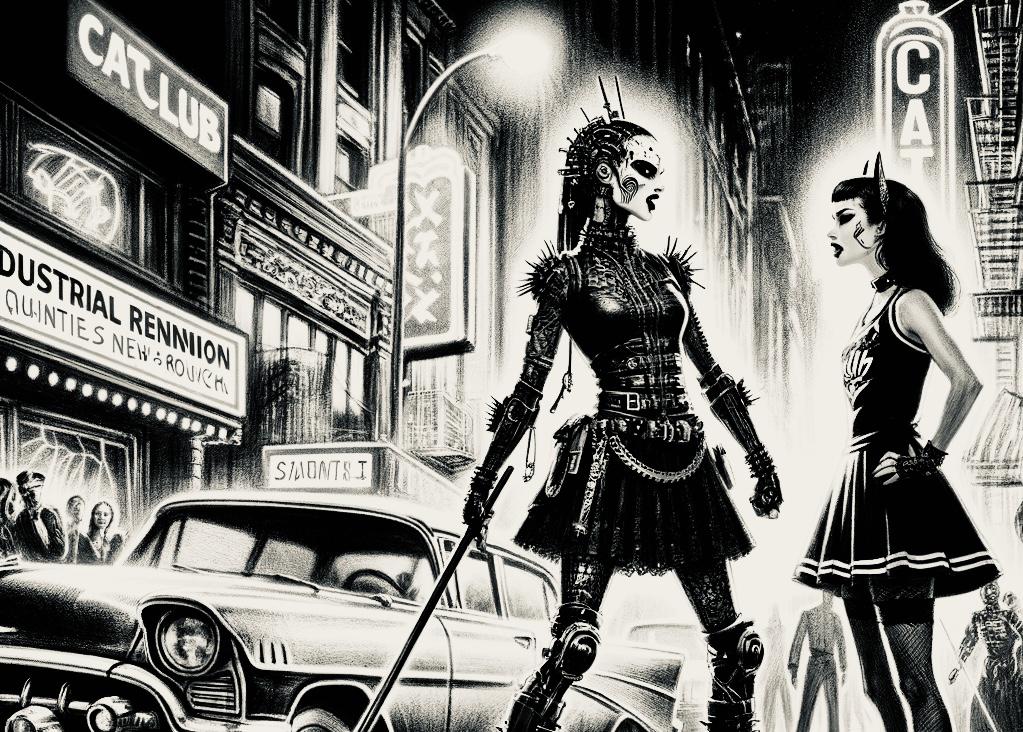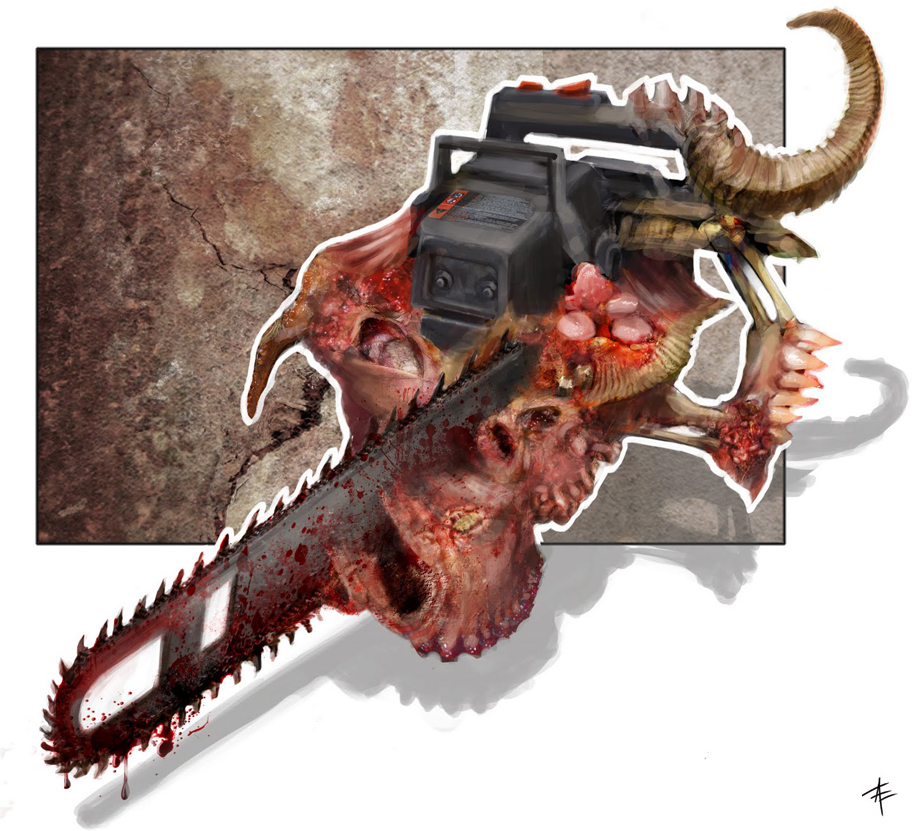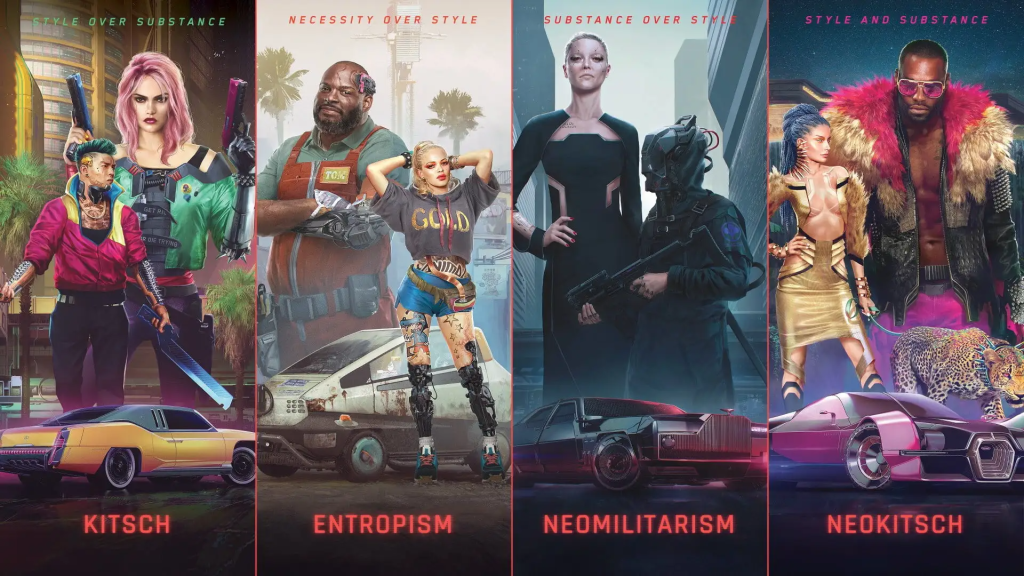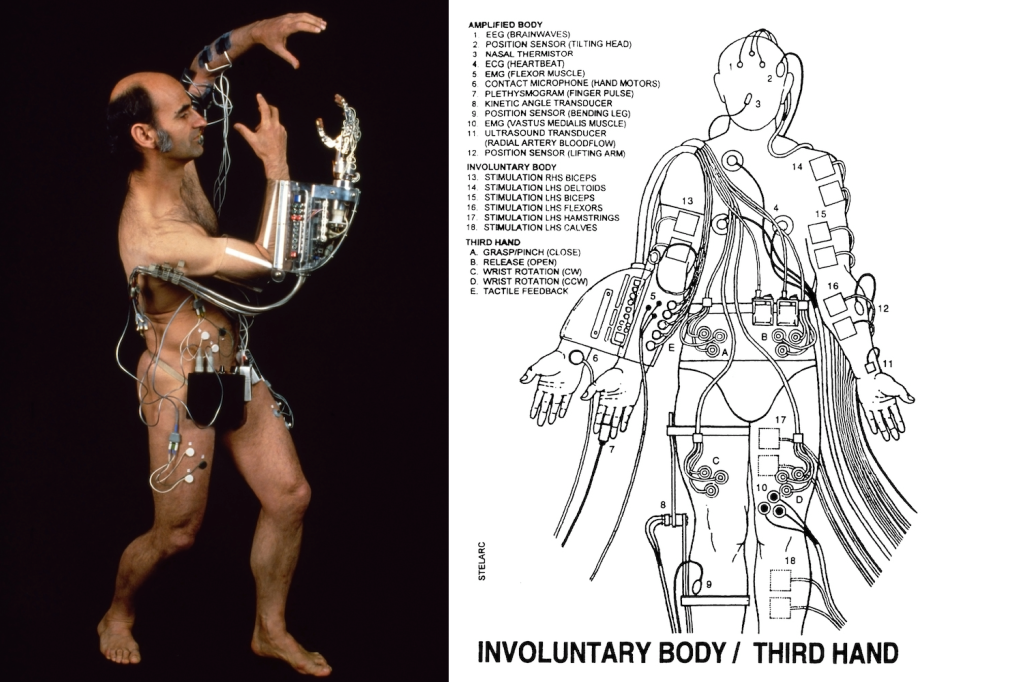
Ionna texts me and says that she’s just fired her 3rd assistant. Her special needs kid has been having some problems lately, and she says that this has been triggering her PTSD. “I feel like jumping off a bridge,” she tells me. She asks me to come over and help her take care of her special needs kid. She requires assistance feeding him from a tube that her past 3 assistants have been fired for not understanding how to use properly. You don’t just take the tube and shove it. I figure I’ll be nice because we have mutuals but that’s always where things go wrong because I know way too many people.
There are Crowley books on Ionna’s shelves, decadent artwork that I might want to display at a loft event if I can rub off the dust from their frames, and the distinct feeling that something is deeply and morbidly off. Yet, who cares about feelings? It’s Friday night in San Francisco, and the Cat Club is hosting Industrial Reunion Night. I want to get my stomp on. This is our night. This is our night! I tell Ionna to hire a new assistant and that we’re going dancing together. “We’re hardcore goth bitches. Old school freaks, baby.” She asks me to help her choose an outfit like a jilted princess who has been reprimanded for being too attractive. I find the hottest corset in her closet and pull it out like the host of an obscure variety show. “This one. Definitely this one.”
“I look disgusting in this!” she screams to me like a porcelain vampire doll. I loudly tell her to focus on getting to the club with me, and she scolds me for upsetting her special needs kid with my loud voice. Whatever. I’m there for Ionna as she screams at me for being too loud because I know what it feels like to be abandoned by 3 assistants for being a high-maintenance scene queen. This is just me being cool and empathetic here. She puts on another outfit, and it’s a Satanic cheerleader thing. A crop top that says 666 on it. Ionna is 43 years old and eventually going to look mid, but she’s never had much competition in the goth scene. With her traditionally feminine features, it’s too bad her mind is so deformed.
Ionna doesn’t just have PTSD. She’s a PTSD therapist with a license to practice EMDR. Her PTSD is far better described as aggressive BPD. The body keeps the scene dramatic. We drive out to the club, and she puts on some horrible drum and bass track that was made by an audio preset on sedatives. She calls it industrial in a bizarre attempt to make me feel at ease. Who am I to correct her before Industrial Reunion Night? I’m not a scenester purist anymore because I’ve become a mature professional who works at the intersection of art and technology, see. Ionna is free to call her horrible music, whatever she wants. “I want to jump off a bridge,” she tells me again. She checks her makeup in the rearview window.
We arrive at the club. Ionna sees her friends outside and begins gossiping with them about her other friends. She pretends like she doesn’t know me, and I’m not even offended because she’s completely deranged, and the DJ is inside spinning Nitzer Ebb. I’m loving the energy. The sheer masculinity of it all gets me thumping hard. I’m stomping alone to the beats yet in perfect sync with everyone on the dance floor, including a girl who looks exactly like Tank Girl but even more industrial. Is she a fan of my music that barely anyone listens to anymore? The atmosphere is perfect, and the girl is a post-apocalyptic pinup fantasy from my hottest of nightmares.
Ionna finds me on the dance floor and acts like nothing weird has happened between us. Perhaps it wasn’t personal and she just really missed her gossip friends when she pretended not to know me a few minutes ago. I’m wearing a black cyber dress with white suspenders and metallic leggings under my giant New Rock boots. I do not look like I belong with this Satanic cheerleader. I try to keep dancing with Industrial Tank Girl, who is now being pulled away by her hideous-looking programmer boyfriend. Suddenly, all I have in my view is Ionna in her 666 uniform. It’s the ultimate horror shot. Yet I dance hard, and I dance fast. I kick, and I stomp, and I twist, and I punch. I’m here for the music.
“This music is too aggressive,” Ionna says to me over the cold hard beats. “I want to hear Miss Kitten.” She stops dancing and pouts a bit with her body against the DJ booth. I’m back alone on the floor, so maybe I can find Industrial Tank Girl and get her gross programmer boyfriend to go away for a while. Yet suddenly, Ionna begins shaking her booty to Lords of Acid, which is by far the worst music I’ve heard all night. Perhaps we can bond through the stupid and repetitive sex lyrics? Sit on your face. I wanna sit on your face. Sit on your face. I wanna sit on your face. She’s doing a “cleansing ritual” type thing with some divine feminine energy that is making me feel transexual. I continue to stomp and kick as I feel the force that I need to unleash. Ionna looks at me in disgust as if I’ve just violated her safe space. My dancing, at the goth club, is too masculine for her.
Industrial is the most masculine genre of goth, and I’ve been unleashing my masculine energy too hard for Ionna the entire time we’ve been at the club. There’s a subcultural divide. There’s a gender divide. There’s gender drama at the goth club. Ionna never cared about Industrial Reunion Night. She just wanted to see her gossip friends at the Cat Club and happened to be involved in the goth scene as a model. My empathy for her was a mere facet of my own narcissistic displacement. I’ve been entertaining her psychosis the entire night because we once modelled in a post-apocalyptic fashion show together in Oakland. This is how we have mutuals, and this is why I must suffer.
Ionna starts complaining to me about how the DJ won’t take her requests to play Miss Kitten. She used to date the DJ, but he abandoned her because he couldn’t handle her special needs kid. Allegedly. I go back to the main dancefloor to enjoy the music because nobody can take that from me. As the night starts coming to a close, I look around the club for about a half hour to find Ionna, who is, of course, my ride out. I eventually realize that she’s completely gone from the club. I go outside to see if I can find her there. She’s literally in the driver’s seat of her car in front of the Cat Club, waiting to pass traffic with her gossip friend in the passenger’s seat. It suddenly hits me. I’ve been ditched by Ionna.
“My son is having an emergency,” she yells to me from the front seat of her car. Maybe she’s bringing her gossip friend home with her to become her new feeding tube assistant. Maybe this new girl can do the proper tube job. I begin remembering all the times that I’ve ever been ditched. It’s the Getting Ditched Series of My Life being played on repeat. There’s a #basicbitch trauma drama element involved. I recall an event from almost two decades ago where a group of girls ditched me at some hipster shindig because I wasn’t “chill enough.”
I remain outside the club to figure out how I’m doing to get home, and a bunch of people come up to me and ask me if I’m Experiment Haywire. They tell me they’re huge fans of my music, which makes me feel a lot better about being ditched because, apparently, people do still listen to my music. I realize this whole night will become another piece of nostalgic scenester history. It’s the nostalgia of the present. These people are telling me how much they loved my last album and how they still have my first album on CD. This one guy is even quoting my own lyrics to me. I think I actually start to cry in #healingmode.
I manage to get home by luck of the draw, and Ionna texts me a few hours later. “I got really freaked out by all that masculine energy.“ I tell her that ditching me will never be acceptable and that her actions reminded me of every time I’d ever been ditched. I let her know exactly how she made me feel, in case she has any empathy in her pocket as a trauma therapist, though by now, I know she’s Goth Interrupted. Is she going to perform EMDR on me for her own behaviour? This PTSD therapist with BPD needs some real help. She’ll never be able to find the proper assistants for her special needs kid because her own needs are just too damn special.
I’m ready to grow a penis and oppress Ionna, yet I can’t go borderline on the borderline. I have to stay calm and refuse to become the oppressor who thinks she’s the oppressed. I can’t become the new Ionna, and none of that Patty Hearst starting her own gang stuff either. It’s too fringe. It’s too obscuritan. I’m too fringe and obscuritan. I question if Ionna has read any of her Crowley books or if she’s stolen them from her DJ ex. I no longer believe that she fired her 3 assistants. At this point, it’s clear to me that they quit.
Yet even here, I need to be the industrial musician, casting myself as the sexy villain enacting some twisted social performance piece rather than taking on the role of the twirly gothic feminine victim cosplayer. I have to view Ionna as a frail and fragile insect begging for her last bit of attention as she eventually realizes that being attractive for the goth scene isn’t going to get people to tolerate her after a certain point. Her time is running out, such a poor unfortunate soul. I decide that I’ve been ditched in a perfectly ironic way that’s reserved for these degenerate types of subcultures.
Our mutuals think we’re both a part of the same scene. I hope that they’re wrong, but I know that I’m guilty. I wonder if they know how bad she is, and they’re using her because she’s thin and knows how to walk a catwalk, a rare thing for any woman in San Francisco. Going to Industrial Reunion Night at the Cat Club was just too toxic for precious Ionna. My dancing was too aggressive, and she couldn’t handle my masculine energy. By now, it’s 4 AM, and I’m back at my apartment building. I blast my favourite songs into my earbuds while kicking and punching into the sky on the rooftop. It feels like I’m still at the club, only this time I’m alone. Everything is toxic, masculine, and beautiful.















